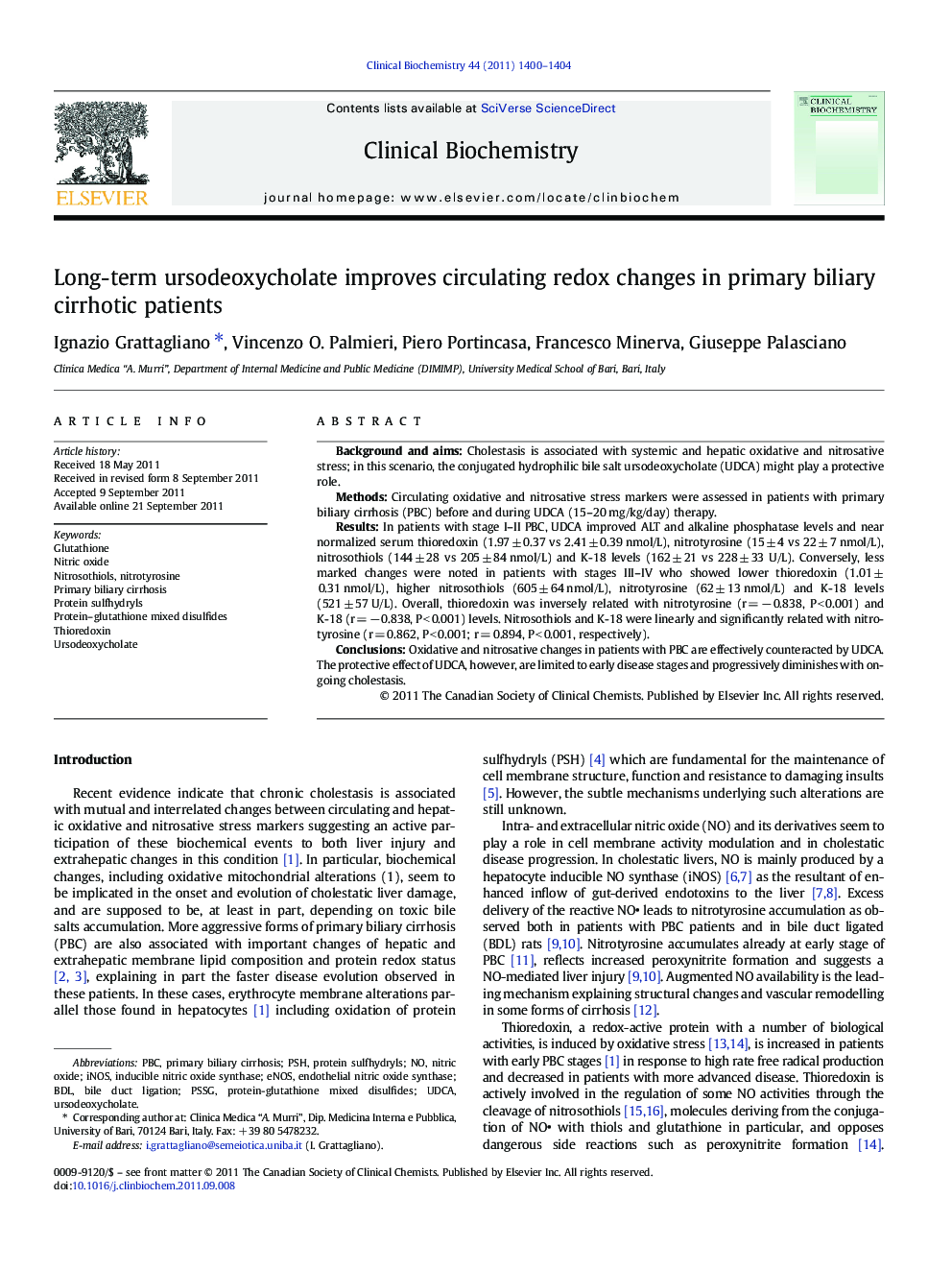| Article ID | Journal | Published Year | Pages | File Type |
|---|---|---|---|---|
| 1970830 | Clinical Biochemistry | 2011 | 5 Pages |
Background and aimsCholestasis is associated with systemic and hepatic oxidative and nitrosative stress; in this scenario, the conjugated hydrophilic bile salt ursodeoxycholate (UDCA) might play a protective role.MethodsCirculating oxidative and nitrosative stress markers were assessed in patients with primary biliary cirrhosis (PBC) before and during UDCA (15–20 mg/kg/day) therapy.ResultsIn patients with stage I–II PBC, UDCA improved ALT and alkaline phosphatase levels and near normalized serum thioredoxin (1.97 ± 0.37 vs 2.41 ± 0.39 nmol/L), nitrotyrosine (15 ± 4 vs 22 ± 7 nmol/L), nitrosothiols (144 ± 28 vs 205 ± 84 nmol/L) and K-18 levels (162 ± 21 vs 228 ± 33 U/L). Conversely, less marked changes were noted in patients with stages III–IV who showed lower thioredoxin (1.01 ± 0.31 nmol/L), higher nitrosothiols (605 ± 64 nmol/L), nitrotyrosine (62 ± 13 nmol/L) and K-18 levels (521 ± 57 U/L). Overall, thioredoxin was inversely related with nitrotyrosine (r = − 0.838, P < 0.001) and K-18 (r = − 0.838, P < 0.001) levels. Nitrosothiols and K-18 were linearly and significantly related with nitrotyrosine (r = 0.862, P < 0.001; r = 0.894, P < 0.001, respectively).ConclusionsOxidative and nitrosative changes in patients with PBC are effectively counteracted by UDCA. The protective effect of UDCA, however, are limited to early disease stages and progressively diminishes with ongoing cholestasis.
► chronic cholestasis is associated with oxidative and nitrosative stress. ► these changes are counteracted by UDCA in PBC patients. ► protection is limited to early disease stages. ► our results do not allow to assert whether stress parameters have a direct pathogenic role.
